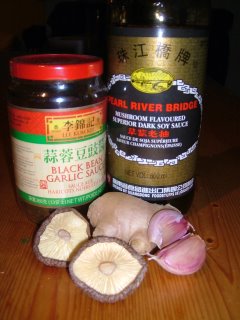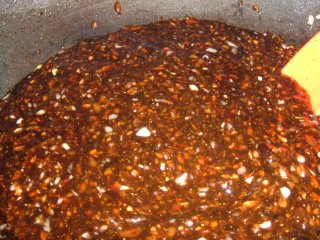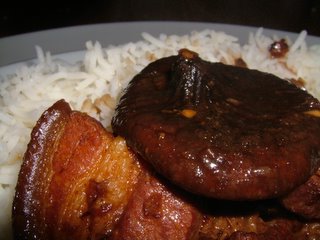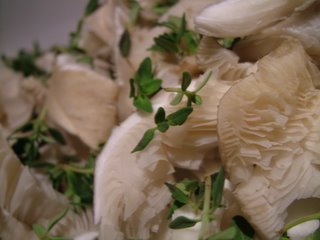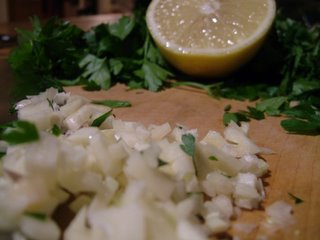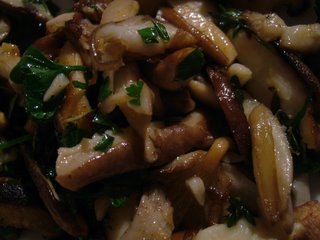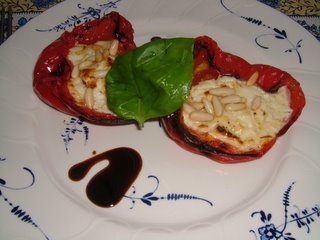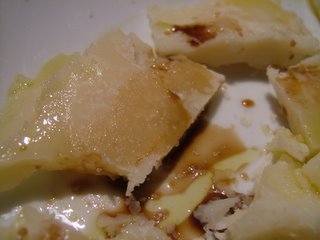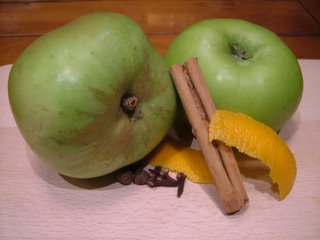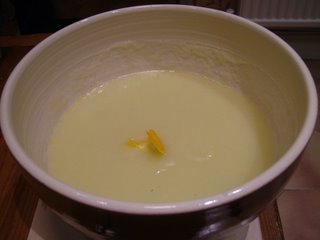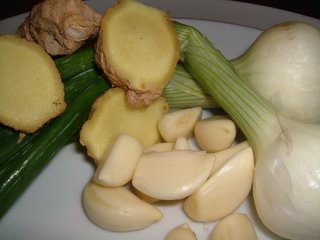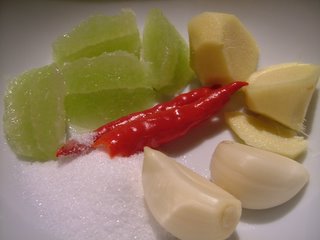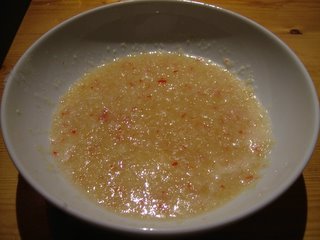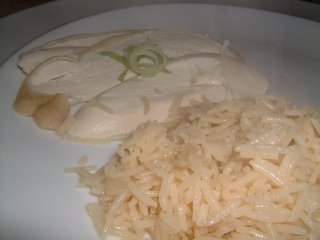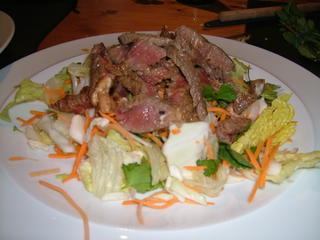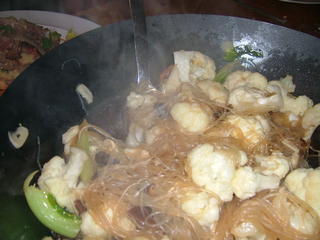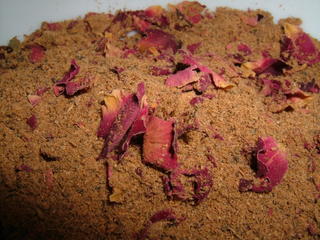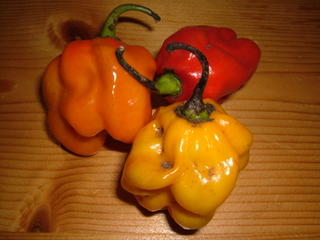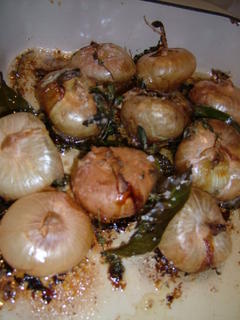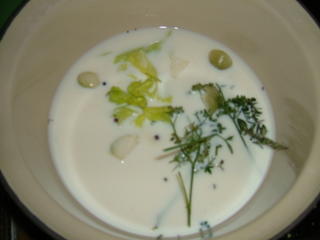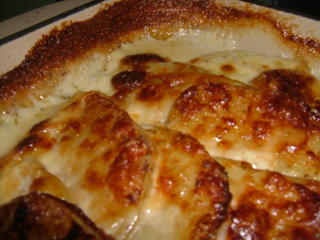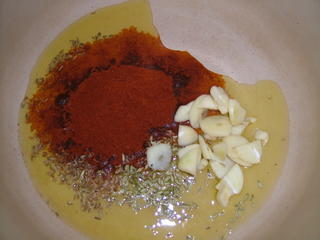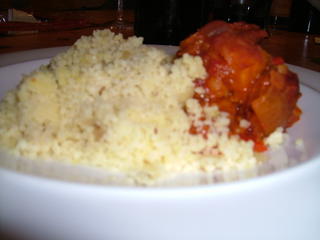 There is something horribly primal about cooking mussels. I think it has to do with the elbow-grease you have to put in cleaning them and slaughtering any barnacles they might be hosting, hauling bits of their still-quivering little mussely bodies off, and the suspicion that the dead ones may not be dead, but merely pretending in the hope you’ll throw them back. (Sadly, these fakers are not smart enough to realise they’re 50 miles from the sea.)
There is something horribly primal about cooking mussels. I think it has to do with the elbow-grease you have to put in cleaning them and slaughtering any barnacles they might be hosting, hauling bits of their still-quivering little mussely bodies off, and the suspicion that the dead ones may not be dead, but merely pretending in the hope you’ll throw them back. (Sadly, these fakers are not smart enough to realise they’re 50 miles from the sea.)
I had some very good moules marinere in Wimereux, a town in northern France, in September. Each tiny mussel (smaller than the mussels you might buy to cook at home) had a pea crab living inside its gills (you can see a very graphic video of one found in a mussel here), which, although admittedly mildly creepy on first encounter (Gah! There is a tiny thing in my mussel), made the whole mussel experience about twenty times better, adding flavour and, dare I say it, texture. Lovely, leggy, crispy texture.
The mussels you can find at an English fishmonger will almost certainly be farmed, rope-grown mussels. This means that they’re not as gritty as wild mussels, but they’re also not as flavourful. On the other hand, though, you can really go to town with the flavours you cook them with, so it’s not a total dead loss.
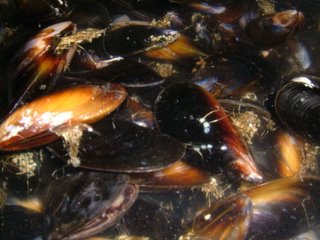 Mussels straight out of the plastic fishmongers’ net are rather unprepossessing. They’re slimy, they have a straw-like, tough ‘beard’ attached (you’re going to have to remove this later, so pay attention), and they offer a home to a myriad of exciting barnacles and other little friends. Some will be open; rap them on the working surface. If they’re alive, they’ll shut. If they’re cracked or dead (or feigning in the hope that you are on a quayside somewhere), they’ll sit there, inert, daring you to look them in the eye. Bin them.
Mussels straight out of the plastic fishmongers’ net are rather unprepossessing. They’re slimy, they have a straw-like, tough ‘beard’ attached (you’re going to have to remove this later, so pay attention), and they offer a home to a myriad of exciting barnacles and other little friends. Some will be open; rap them on the working surface. If they’re alive, they’ll shut. If they’re cracked or dead (or feigning in the hope that you are on a quayside somewhere), they’ll sit there, inert, daring you to look them in the eye. Bin them.
 Run a sink of cold water, and drown the sad, live mussels. Give them a good scrub with a little brush, take the beards between your fingers, and yank them off. The larger the mussel, the harder you will have to yank. This beard is not, obviously, a beard, mussels having no weak chins to hide from lady mussels, but is a fibrous mass they grow to attach themselves securely to rocks (or in the case of these guys, ropes). When you pull it off, pull towards the shell’s hinge; you might tear apart the meat of the mussel pulling towards the open end, and this will kill them, prevent you from dealing them the unique, boiling-in-wine death you’re about to offer. The ones in the picture above are cleaned. They look a lot more appetising.
Run a sink of cold water, and drown the sad, live mussels. Give them a good scrub with a little brush, take the beards between your fingers, and yank them off. The larger the mussel, the harder you will have to yank. This beard is not, obviously, a beard, mussels having no weak chins to hide from lady mussels, but is a fibrous mass they grow to attach themselves securely to rocks (or in the case of these guys, ropes). When you pull it off, pull towards the shell’s hinge; you might tear apart the meat of the mussel pulling towards the open end, and this will kill them, prevent you from dealing them the unique, boiling-in-wine death you’re about to offer. The ones in the picture above are cleaned. They look a lot more appetising.
For this recipe, which serves two people, you will need:
2kg mussels, cleaned
1/2 a bottle white wine (I used a chenin blanc)
4 tablespoons creme fraiche
1 tablespoon fresh thyme
2 bay leaves
1 large bunch parsley
1 large bunch chives
5 shallots (or 1 large onion) chopped finely
4 cloves garlic chopped finely
1 large knob butter
 Soften the shallots and garlic with the thyme and bay leaves in the melted butter over a medium heat for five minutes. Turn up the heat, then add the wine and creme fraiche. Simmer for five minutes to burn off the alcohol, and, while the wine mixture is bubbling, tip all the cleaned mussels in. Slam the lid on. The mussels, already pretty grumpy that you’ve removed a useful body part, will expire in the steam, giving their salty juices to the sauce – you don’t need to add salt yourself.
Soften the shallots and garlic with the thyme and bay leaves in the melted butter over a medium heat for five minutes. Turn up the heat, then add the wine and creme fraiche. Simmer for five minutes to burn off the alcohol, and, while the wine mixture is bubbling, tip all the cleaned mussels in. Slam the lid on. The mussels, already pretty grumpy that you’ve removed a useful body part, will expire in the steam, giving their salty juices to the sauce – you don’t need to add salt yourself.
(On re-reading this, I realise it sounds positively pornographic. This is half the fun of shellfish.)
Keep the lid on for three minutes, then check the pan. Fish out as many as have opened as you can, and put them in a serving dish (I use large salad bowls – there’s a lot of shell in there). Put the lid back on and steam for three more minutes – they should now all be open. (Discard any closed ones; they were probably dead before you cooked them.) Take the mussels out, leaving the sauce in the pan. Stir the chives and parsley into the hot sauce, leave it for a minute to allow any sand or grit to settle (very unlikely, this, with rope-grown mussels) and spoon it over the open shells.
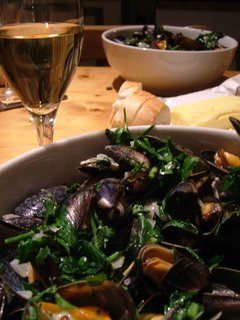 Make sure you’ve got some good bread to dip in the buttery, juicy sauce, and use your fingers to pull the satiny little mussels from their shells.
Make sure you’ve got some good bread to dip in the buttery, juicy sauce, and use your fingers to pull the satiny little mussels from their shells.
I usually end up naming some of my more recognisable mussels. Clint, the very big one with the nigh-unremovable beard, and Fifi, the teeny, beardless one with the barnacle beauty-spot, both died for my supper. It was a worthwhile sacrifice.

